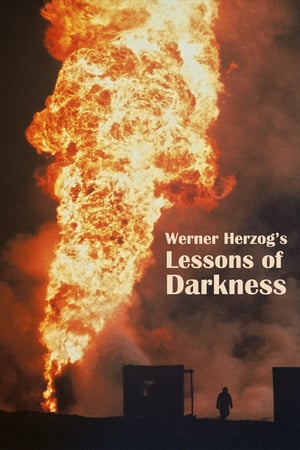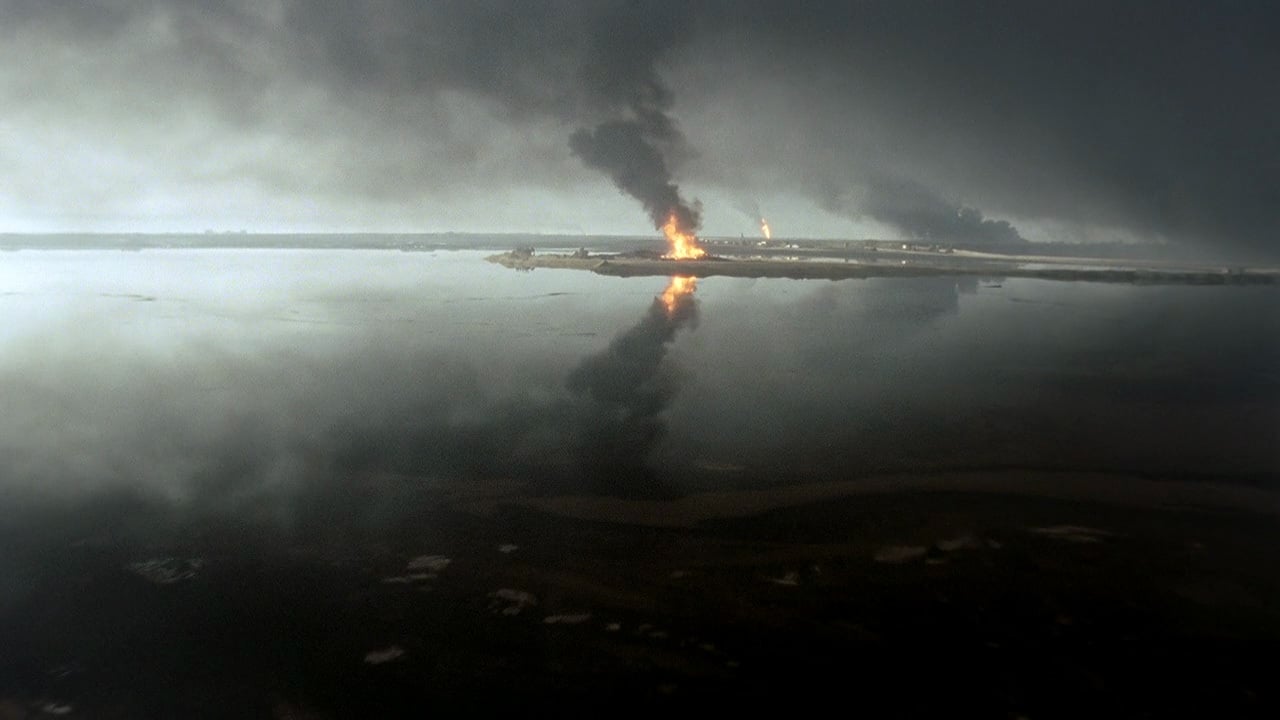
A review in brief
Werner Herzog released Lessons of Darkness in 1992, so it's not fair to complain that he has nothing to say about the second American war in Iraq. But even if he had waited 13 years, I still think he might have avoided anything political; because he certainly didn't go out of his way to comment on the first war.
In 1991, as the oil fields burned in Kuwait, most of us (and I was juuuusst old enough to remember) would not have thought of Hieronymous Bosch. That is because most of us are not Herzog, and that is why he is a great filmmaker and no-one reading this blog is. Because the "documentary" (thoughts on that later) he produced is not about the Gulf War, or even war as a fact. It is a documentary of Hell. It shows images of apocalyptic destruction, aggressively (even misleadingly) ripped of context, creating a visual collage whose net result is: Hell. When he focuses on individuals, even interviewing a few, he makes no effort to identify them or why they have come to the pass they are at. They are simply The Tormented.
It is an extraordinary achievement, and one that speaks to the evilness of war far more damningly than I would have deemed possible. But to say that it is anti-war undersells it. War is nothing more than a modality of destruction, but there are others, and this film is focused on the awfulness (both senses) of total annihilation. Herzog compared it to Bosch and Dante. I can't trump that. Like those two artists, he achieves something beyond moralizing or editorials: he taps directly into nightmare.
This is of course because unlike every other filmmaker who set out to create Hell, Herzog had the real thing right in front of him. Watching the two films right in a row, I was inevitably reminded of the burning scenes in Jarhead, a film that's utterly ineffectual at capturing the belching flames and vast plains of smoke that I saw here. There are images that are so unthinkable as to transcend horror and move into a kind of abstract beauty.
And that is where, as so often happens with Herzog, the line between documentary and art and fiction blurs. Because the model for this film is not CNN (though footage from that network appears); and despite Herzog's claim, it's not science fiction in any real sense (the film is framed from the point of view of alien anthropologists come down to Earth). If it has any analogues, they would be Godfrey Reggio's Koyaanisqatsi, or Herzog's own earlier Fata Morgana. Like those two, it uses image and aural counterpoint to suggest theme. But it is, in a way, diametrically opposed. For here, Herzog uses beautiful music from Wagner, Verdi, Mahler, etc. against the images of utter apocalypse. The music doesn't reinforce anything. It begins to make the visuals almost grand in their scope. That's Herzog for you: footage of the depths of hell, and he still manages to trick you into thinking, "that's pretty."
In 1991, as the oil fields burned in Kuwait, most of us (and I was juuuusst old enough to remember) would not have thought of Hieronymous Bosch. That is because most of us are not Herzog, and that is why he is a great filmmaker and no-one reading this blog is. Because the "documentary" (thoughts on that later) he produced is not about the Gulf War, or even war as a fact. It is a documentary of Hell. It shows images of apocalyptic destruction, aggressively (even misleadingly) ripped of context, creating a visual collage whose net result is: Hell. When he focuses on individuals, even interviewing a few, he makes no effort to identify them or why they have come to the pass they are at. They are simply The Tormented.
It is an extraordinary achievement, and one that speaks to the evilness of war far more damningly than I would have deemed possible. But to say that it is anti-war undersells it. War is nothing more than a modality of destruction, but there are others, and this film is focused on the awfulness (both senses) of total annihilation. Herzog compared it to Bosch and Dante. I can't trump that. Like those two artists, he achieves something beyond moralizing or editorials: he taps directly into nightmare.
This is of course because unlike every other filmmaker who set out to create Hell, Herzog had the real thing right in front of him. Watching the two films right in a row, I was inevitably reminded of the burning scenes in Jarhead, a film that's utterly ineffectual at capturing the belching flames and vast plains of smoke that I saw here. There are images that are so unthinkable as to transcend horror and move into a kind of abstract beauty.
And that is where, as so often happens with Herzog, the line between documentary and art and fiction blurs. Because the model for this film is not CNN (though footage from that network appears); and despite Herzog's claim, it's not science fiction in any real sense (the film is framed from the point of view of alien anthropologists come down to Earth). If it has any analogues, they would be Godfrey Reggio's Koyaanisqatsi, or Herzog's own earlier Fata Morgana. Like those two, it uses image and aural counterpoint to suggest theme. But it is, in a way, diametrically opposed. For here, Herzog uses beautiful music from Wagner, Verdi, Mahler, etc. against the images of utter apocalypse. The music doesn't reinforce anything. It begins to make the visuals almost grand in their scope. That's Herzog for you: footage of the depths of hell, and he still manages to trick you into thinking, "that's pretty."
Categories: documentaries, war pictures, werner herzog






